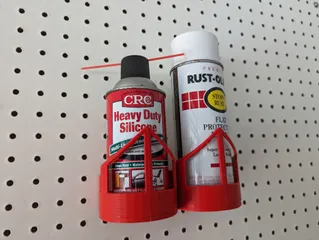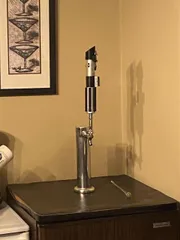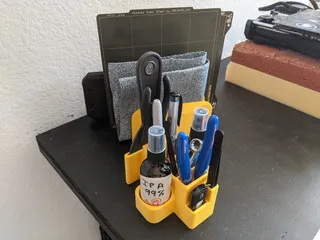Xiangqi / Chinese Chess - complete set (pieces board box) Western-style pieces, 180mm bed
Description
PDFThis is a Xiangqi (aka Chinese Chess) board and pieces, targeting the Prusa Mini. It fits in the build plate by nature of being sliced into parts with connectors between. It is multi-colored based on layer changes (for the playing pieces) and the fake-multi-extruder feature of PrusaSlicer for the board. The Blender file has all the bits in one, and the ones that are intended to print directly are visible while test pieces or parts are hidden from view. The pieces are Western-style, which means they look like European chess pieces that have recognizable shapes, rather than the traditional you-need-to-read-Chinese style of labeled disks.
All files are licensed by Darren New as CC-BY-SA. You can remix, adapt, and build upon this, but you ought mention me in your credits if you do. All work here is original modeling by me, with a few bits based on public domain reference images. A lot of work and testing went into this, so I'd love to hear from anyone else using it.
This is a complex print with multiple colors, and for the board multiple colors on the same layer. I recommend that if you tweak, you use the .3mf to see how things are set up. The board is printed upside down, while the pieces have the right number of instances for one side in the slice. (I.e., print each pieces.3mf twice, once with each side's colors.) Also, the pieces have been rotated to reduce stringing when multiple pieces are printed in one print. (You might want to try the newer-than-this-gcode Arachne slicer to see if it improves things, too.) Note that the totals will be off because the pieces have to be printed once for each color, and the board-left and board-right need to be printed twice.
The g-code for the pieces has color changes at specific layers. The top (second) color change is intended to make it easier to tell apart the pieces from above.
The g-code for the board has color changes mid-layer, using the PrusaSlicer fake-multiple-MMU feature. Feel free to re-slice.
For the pieces:
Pieces to print per side, with minutes needed of each color for the entire set, as built in the 3mf. These are all 0.1mm prints on a 0.4mm nozzle. The can be printed red or black on the base, whatever color you want in the middle, then red or black again on the top. Or manually chop out the second M600 command in each gcode file, if you don't want to re-slice and you want the top half all the same color. Note that some of these are turned so any stringing doesn't cross over and pollute the rest of the prints. (I.e., for the two cannons, it will print the base color for 15 minutes, the main color for 41 minutes, then the third color (base color again) for 7 minutes.)
2 Cannons - 15, 41, 7
2 Carts - 15, 35, 5
2 Elephants - 15, 38, 5
2 Horses - 15, 34, 2
2 Guards - 14, 55, 11
5 Pawn - 34, 66, 5
1 General - 10, 52, 7
Print the test fit file, pick the scaling that gives you the fit you like. Turn the STL so the void is upwards, and print two of them and one connector at 100%, 99%, and 98% to see what feel you like. Then print the x9 connectors of that size, or resize as you like.
TestFit - 26
Connectors to print, pick one size gcode:
9 Connector - 55
For the board:
Print one center file (that includes 2 instances in the 3mf), and two left and two right pieces. Times are the "remaining time" when a color change is needed, along with the color to change to. These are all 0.2mm layers on a 0.4mm nozzle. I.e., for the center, when the screen gets to 2h27m left, you'll be prompted to insert the blue filament.
The STLs for the board should all be turned upside-down, so the voids for the connectors face up and the squares are against the bed. It kind of leaves the black edges hanging, which I'd probably re-do if I wanted to spend the time, but it seems to work well enough. Also, the edges of the voids for the connectors seem to droop a bit, requiring a bit of shaving, so maybe move the outside edge outwards 0.1mm and leave the inside edges precise, if you're going to print more than one of these. Otherwise, a bit of angle-clipping or smaller connectors work, but I like the tight fit.
Board Center x2:
195: yellow (3h15m)
186: blue (3h06m)
150: yellow (2h30m)
147: blue (2h27m)
137: yellow (2h17m)
134: blue (2h14m)
124: yellow (2h04m)
122: black (2h02m)
95: grey (1h35m)
Board Left or Right:
400: yellow (6h40m)
362: white (6h02m)
299: yellow (4h59m)
287: white (4h47m)
267: yellow (4h27m)
256: white (4h16m)
236: yellow (3h56m)
230: black (3h50m)
160: grey (2h40m)
Box Body: 7h16m all one color.
Box Lid: (Assumes black text and yellow backing)
185: Yellow - 3h05m (Yellow for 43 minutes)
142: Black - 2h22m (Black for 12 minutes)
130: Yellow - 2h10m (Finishes with Yellow)
Bonus image: All the tests and failures! ;-)
Model origin
The author hasn't provided the model origin yet.




